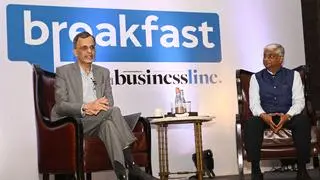FMCG companies are ramping up focus on ‘bridge packs’ that are priced between popular entry-level packs and big packs as they tackle inflationary pressures. Analysts said this strategy is helping FMCG companies incentivise consumers to move up in terms of pricing and value proposition. It also allows companies manage consumers’ shift to more affordable packs due to inflationary pressures.
In response to inflationary pressures, FMCG companies have been focusing on grammage cuts and price hikes besides cost optimisation strategies. However, it is not feasible to hike the prices of low-unit packs (entry-level packs) such as ₹5 and ₹10 due to their popularity. In addition, its not feasible to reduce grammage of such low unit packs (LUPs). So, FMCG companies are using bridge packs to address “margin pressure challenges” to realise better price hikes since grammage cuts in LUPs are not easy, say analysts.
For instance, biscuits major Parle, has launched a bridge pack at ₹15. Similarly, HUL has introduced the Lifebuoy pack at ₹16, a bridge pack between ₹10 and ₹36.
‘Price hikes not feasible’
Mayank Shah, Senior Category Head, Parle Products, said, “The FMCG sector has witnessed unprecedented inflation in the last six months. It’s not feasible to increase prices of the low unit packs or keep reducing the grammage in response to this volatility Hence, it’s important to help the consumer move uptrade to bigger packs.”
“But there is always an inertia among consumers to move to bigger packs. Hence, bridge packs positioned in the middle of low unit packs and the bigger packs helps in reducing this inertia by incentivising them to try a bigger pack. On one hand, companies continue with the LUPs and on the other they focus on helping the consumer move up the value chain through bridge packs, “ he added.
FMCG companies are also increasing focus on bridge packs to combat inflation when consumers are downtrading across price points and categories. “LUPs (Low unit packs) face a coinage issue in terms of pricing (SKUs priced at ₹1/2/5/10), and they contribute 30–40 per cent to revenue in many categories. So FMCG companies are launching products that are not at popular price points, but between ₹5 and ₹20—these are called bridge packs. They provide the right price-value equation to consumers. Having SKUs between LUPs and large packs allows a company to capture some of the downtrading from larger packs,” noted Abneesh Roy, ED-Institutional Equities, Edelweiss Securities, in a report.
‘Strategy needs to be long-term’
However, Tarun Arora, CEO, Zydus Wellness, believes the bridge packs strategy needs to be more long-term as consumers do not change purchase habits overnight. “ We have been experimenting with bridge packs in brands such as Nycil. While bridge pack strategy plays a role, changes in consumer habits and purchase patterns do not happen quickly. Hence it needs to be part of the overall price pack architecture strategy for the long term,” he added.








Comments
Comments have to be in English, and in full sentences. They cannot be abusive or personal. Please abide by our community guidelines for posting your comments.
We have migrated to a new commenting platform. If you are already a registered user of TheHindu Businessline and logged in, you may continue to engage with our articles. If you do not have an account please register and login to post comments. Users can access their older comments by logging into their accounts on Vuukle.